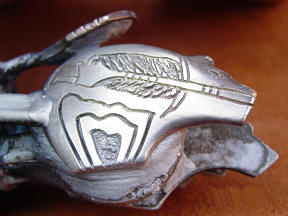Improved Anti-fire Scale Casting Procedure
This paper describes a process that eliminated fire scale during a vacuum casting cycle. Castings should not have a fire scale problem if the casting are cooled following this procedure.This casting was cooled using this process. This is what it looks like after quenching and brushing with a brass brush.
1 Minute Read
This paper describes a process that eliminated fire scale during a vacuum casting cycle. Castings should not have a fire scale problem if the casting are cooled following this procedure.
This casting was cooled using this process. This is what it looks like after quenching and brushing with a brass brush. It was not pickled.
The following two parts should be fabricated:
You assume all responsibility and risk for the use of the safety resources available on or through this web page. The International Gem Society LLC does not assume any liability for the materials, information and opinions provided on, or available through, this web page. No advice or information provided by this website shall create any warranty. Reliance on such advice, information or the content of this web page is solely at your own risk, including without limitation any safety guidelines, resources or precautions, or any other information related to safety that may be available on or through this web page. The International Gem Society LLC disclaims any liability for injury, death or damages resulting from the use thereof.
The All-In-One Jewelry Making Solution At Your Fingertips
When you join the Ganoksin community, you get the tools you need to take your work to the next level.
Trusted Jewelry Making Information & Techniques
Sign up to receive the latest articles, techniques, and inspirations with our free newsletter.
